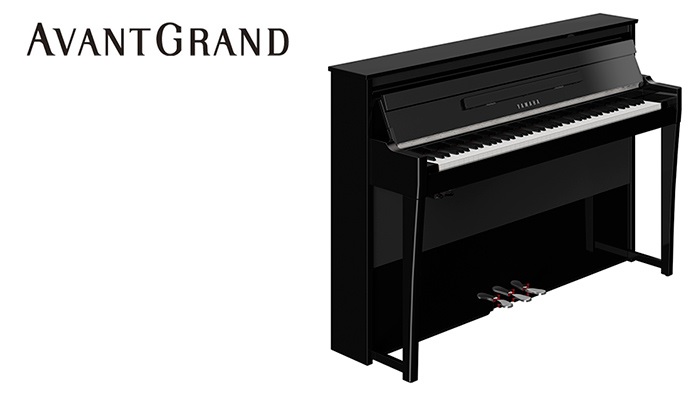For some reason, the best news pops up over the weekend. In this case, it’s announcement of the four-octave Hammond M-solo tone-wheel organ+. You got your drawbars, percussion and scanner controls, and four-octave keyboard in one compact unit. Hammond is pitching the M-solo as a second board to add over your other stage instruments (e.g., slab piano). Four octaves, though, is enough for real two-handed sport.
“The 8 pound M-solo features 49 keys, driving our “MTW II” Drawbar engine as found in our XK-4 Organ. All the essential HAMMOND ingredients are aboard, like Vibrato-Chorus (C1,C2,C3 etc.) and Touch-response percussion. Our high-definition digital LESLIE™ is on hand.”
Hammond need to hire a native English-speaking tech writer to edit the M-solo manual right doggone now. The grammar is horrible. Please.
The Hammond M-solo has four engines:
- MTWII tone-wheel organ (polyphony: 61)
- Transistor organs (polyphony: 96)
- String/vocal ensemble (polyphony: 96)
- Polyphonic synthesizer (polyphony: 8)
You can read all of the Hammond M-solo specs here. The drawbars control mix/timbre for all four engines. You can store up to three patches.
The polyphonic synthesizer is a two oscillator (triangle, sawtooth, square, pulse main and sub osc), filter and envelope affair. No mod or pitch-bend wheels; articulations are produced by pushing the (percussion) buttons.
The transistor organs and string/vocal ensemble are throw-backs to yester year (the 70s).
The goes-ins and goes-outs have the essentials: expression pedal, stereo 1/4″ jacks, phones, AUX IN (3.5mm), USB-B TO HOST, 5-pin MIDI IN and OUT, and something labelled “Leslie FAST”. The AC adapter in looks like a Casio-standard jack, uh-oh.
Someone floated a Japanese price on Keyboard Corner, but I could not verify it on the Suzuki web site. I suspect that Hammond are aiming for the magic $999 USD price point. I wouldn’t expect much for $1,000 these days, so forget about luxury features. Hammond Suzuki are offering a limited number of units in burgundy color.
The big (errr, small) spec that jumps out at me is 7 pounds 15 ounces (3.6kg). After 71 years, I have herniated just about everything that can be herniated. Small is good; light is good.
For me, I see the M-solo replacing my Yamaha Reface YC. I mainly use the YC at rehearsals — quick in, quick out. I’ve used the YC at the church job, when slugging MODX is too much for my health. Several things about Reface YC really annoy me: the fast rotary speaker speed, its chorus/vibrato and the three octave keyboard. Mini-keys are somewhat annoying, but hot-damn, either my left and/or right hand runs out of space on that friggin’ three octave keyboard. Three octave keyboards should be outlawed. No diggity.
Demo-wise, the organ demos have me interested. If you only have time for one video demo, play this one.
Definitely a big step up from Reface YC. The poly synth demo sounds are pretty weak. I’m hoping to get one or two good pad sounds out of it, maybe a flute-y lead. The string ensemble is a little too “PAiA Stringz’n’Thingz”, but I expected that. (Solina? Not so sure.) I don’t need much for rehearsal. And the M-solo will scratch my occasional itch for combo organ.
Copyright © 2023 Paul J. Drongowski








